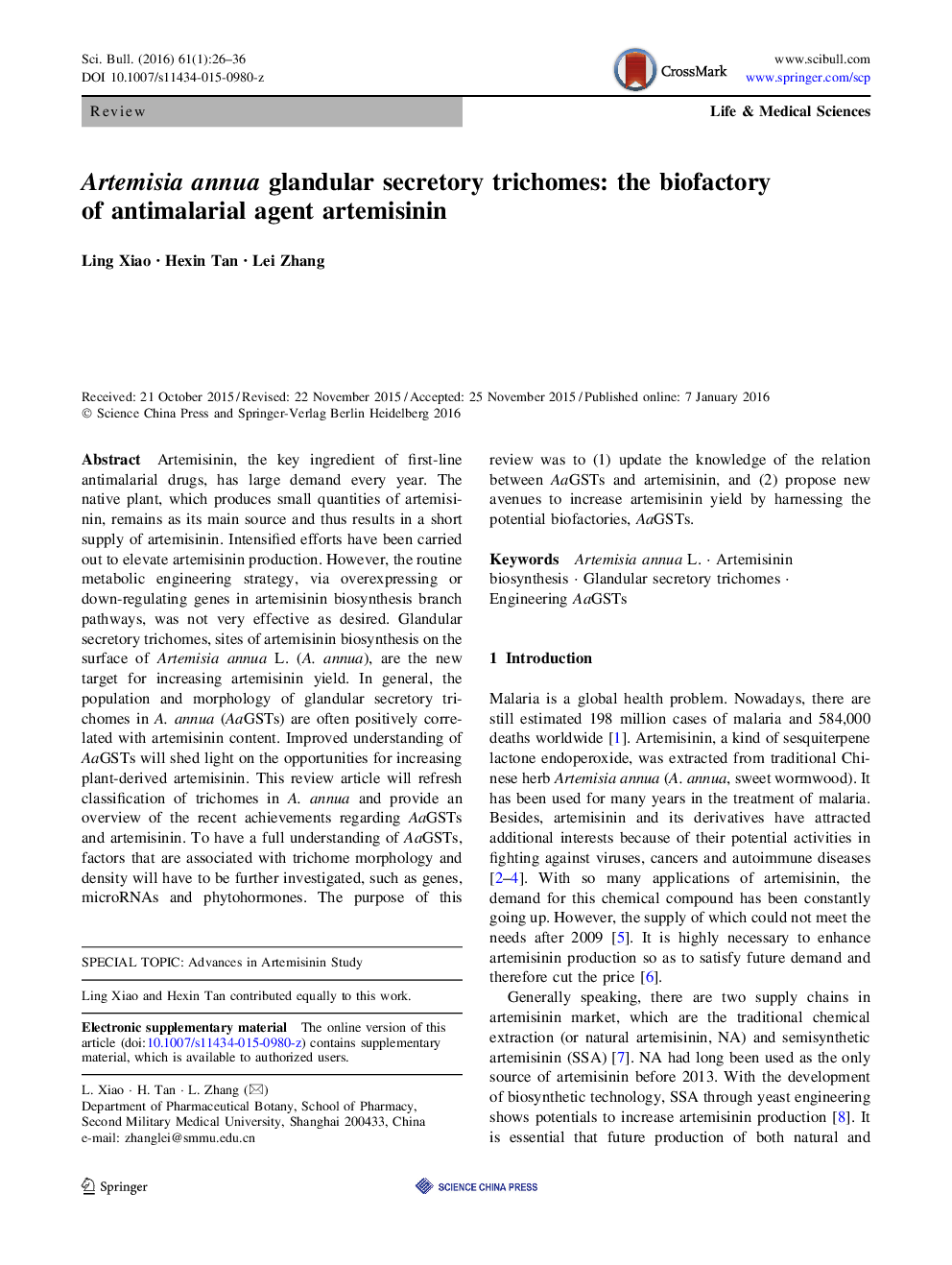| Article ID | Journal | Published Year | Pages | File Type |
|---|---|---|---|---|
| 5788821 | Science Bulletin | 2016 | 11 Pages |
Abstract
Artemisinin, the key ingredient of first-line antimalarial drugs, has large demand every year. The native plant, which produces small quantities of artemisinin, remains as its main source and thus results in a short supply of artemisinin. Intensified efforts have been carried out to elevate artemisinin production. However, the routine metabolic engineering strategy, via overexpressing or down-regulating genes in artemisinin biosynthesis branch pathways, was not very effective as desired. Glandular secretory trichomes, sites of artemisinin biosynthesis on the surface of Artemisia annua L. (A. annua), are the new target for increasing artemisinin yield. In general, the population and morphology of glandular secretory trichomes in A. annua (AaGSTs) are often positively correlated with artemisinin content. Improved understanding of AaGSTs will shed light on the opportunities for increasing plant-derived artemisinin. This review article will refresh classification of trichomes in A. annua and provide an overview of the recent achievements regarding AaGSTs and artemisinin. To have a full understanding of AaGSTs, factors that are associated with trichome morphology and density will have to be further investigated, such as genes, microRNAs and phytohormones. The purpose of this review was to (1) update the knowledge of the relation between AaGSTs and artemisinin, and (2) propose new avenues to increase artemisinin yield by harnessing the potential biofactories, AaGSTs.
Related Topics
Physical Sciences and Engineering
Chemistry
Chemistry (General)
Authors
Ling Xiao, Hexin Tan, Lei Zhang,
